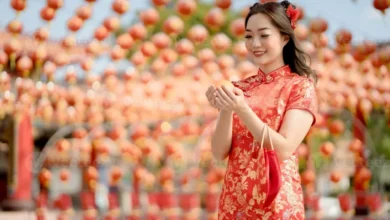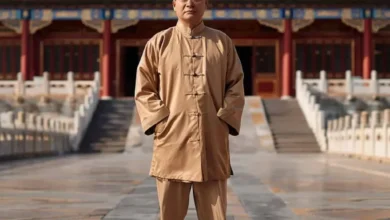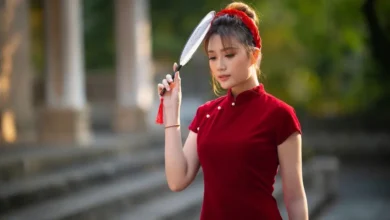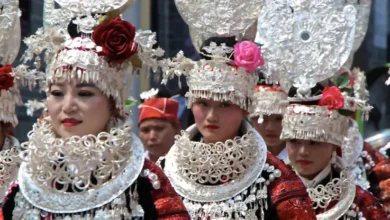Hey there, friend. Imagine slipping into a garment that whispers stories of revolution, unity, and quiet strength. That’s the magic of the Zhongshan suit. If you’ve ever caught a glimpse of it in a classic film or on a world stage, you know it carries more than fabric—it’s a piece of history you can wear.
In this article, we’ll dive into its roots, unpack its timeless design, and explore how it’s evolving today. Whether you’re a history buff, a fashion lover, or just curious about cultural icons, stick around. You’ll walk away feeling empowered to embrace your own style with a nod to heritage.
As we chat about this staple of Chinese menswear, remember: clothing isn’t just about looking good. It’s about feeling connected—to your roots, your values, and the world around you. Let’s get started.
The Origins of the Zhongshan Suit: From Revolution to National Icon
Picture early 20th-century China. The Qing Dynasty has fallen, and a new republic is rising from the ashes. Enter Sun Yat-sen, the revolutionary leader often called the father of modern China. He’s not just fighting for political change; he’s reimagining what it means to dress like a free Chinese man. Tired of the flowing robes of the past that felt tied to imperial rule, Sun sought something practical, modern, and distinctly Chinese.
See also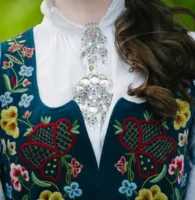 The Timeless Threads of the Bunad: Norway’s Living Heritage in Every Stitch
The Timeless Threads of the Bunad: Norway’s Living Heritage in Every Stitch
The Zhongshan suit—named after Sun’s alias, Sun Zhongshan—emerged around 1912, right after the Republic of China’s founding. It wasn’t born in a vacuum. Sun drew inspiration from Japanese student uniforms he’d seen during his exile, blending them with Western suit elements like structured jackets and trousers. But he kept the essence Chinese: symmetry, simplicity, and a touch of symbolism that screamed national pride.
A Timeline of Its Rise
To make this scannable, here’s a quick timeline of how the Zhongshan suit took hold:
| Year | Key Event |
|---|---|
| 1911 | Xinhai Revolution ends Qing rule; Sun Yat-sen pushes for modern national dress. |
| 1912 | Republic of China founded; Zhongshan suit debuts as formal wear for officials. |
| 1925 | After Sun’s death, the suit is renamed Zhongshan suit in his honor. |
| 1949 | Mao Zedong adopts it, dubbing it the “people’s uniform” post-Communist victory. |
| 1978 | Reform era begins; Western suits gain ground, but Zhongshan suit lingers in ceremonies. |
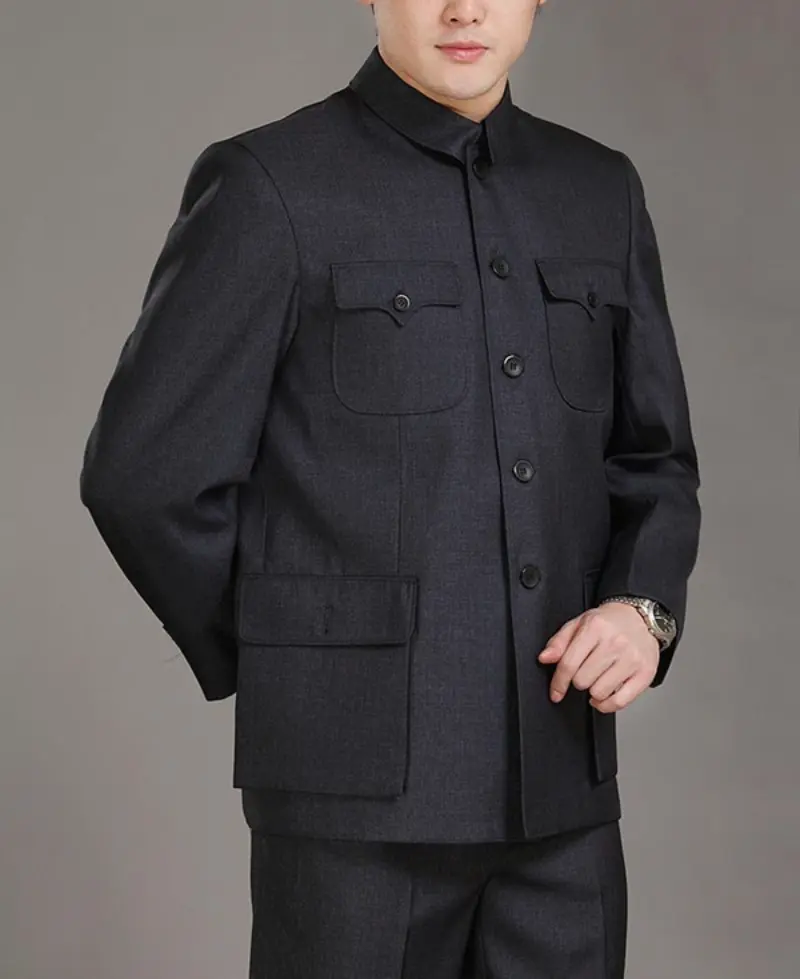
This wasn’t just fashion—it was a statement. Elites rejected Manchu-style changshan robes, seen as symbols of oppression. The Zhongshan suit offered utility for a changing nation: easy to move in, affordable to make, and bold enough to signal progress.
From a Native Chinese lens, as shared in cultural reflections, it’s more than cloth. One elder in a Beijing archive recalls his father wearing it during the 1911 uprisings: “It made us feel equal, like we were building something new together.” Academics echo this. In How to Make a Mao Suit (2023), Antonia Finnane details how it became a “clothing regime” in Mao-era China, tying personal identity to collective revolution.
See also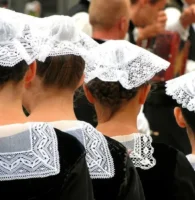 The Delicate Crowns of Coiffes Bretonnes: Brittany’s Lace Legacy of Pride and Craft
The Delicate Crowns of Coiffes Bretonnes: Brittany’s Lace Legacy of Pride and Craft
Fun fact: The suit’s Japanese roots? Sun’s alias “Zhongshan” came from a friend hiding him in Kyushu—proof that global influences can birth local legends.
Decoding the Design: What Makes the Zhongshan Suit Timeless?
Ever wonder why the Zhongshan suit looks so sharp yet simple? It’s no accident. Every stitch tells a story of balance and intention. Let’s break it down like we’re tailoring one ourselves.
Core Features at a Glance
- Mandarin Collar (Turn-Down Closed Collar): Stands tall, symbolizing meticulous governance. No lapels here—it’s all about clean lines and neck-framing poise.
- Five Central Buttons: Fasten up the front for a secure, unified feel. They nod to the five branches of government Sun envisioned.
- Four Patch Pockets: Two on top, two below—perfect symmetry. They represent the Four Virtues from ancient text Guanzi: propriety, righteousness, honesty, and shame. (Bonus: The top ones mimic ink pens, urging “flourish the state with culture, not arms.”)
- Three Cuff Buttons per Sleeve: Echo Sun’s Three Principles—nationalism, democracy, livelihood.
- One-Piece Jacket: No splits; it stands for China’s unity. Paired with straight-leg trousers, it’s comfy for all-day wear.
Made from wool, cotton, or linen, it’s breathable yet structured. Colors? Classic navy, gray, or black for formality; lighter shades for everyday.
In academic circles, this design shines for its ergonomics. A 2021 study in Fashion Practice praises how it adapts for older wearers—detachable linings for seasons, mesh pockets for meds—blending tradition with practicality. Native voices agree: “It’s stable, like the man who wears it,” says a Shanghai tailor in a cultural doc.
Pro tip: When trying one on, button it fully—the collar’s hug empowers that “ready for anything” vibe.
Cultural Significance: How the Zhongshan Suit Shapes Chinese Identity
Clothes speak volumes about who we are. For China, the Zhongshan suit is a badge of resilience. It bridged old and new, East and West, turning everyday folks into symbols of progress.
Beyond Fabric: Layers of Meaning
- Unity and Equality: In the 1950s-70s, it was the great equalizer. From farmers to officials, everyone wore it—erasing class lines in a sea of gray. As Finnane notes, it fostered “proletarian unity.”
- Patriotism: Sun wove in Confucian virtues, making wearers feel part of a moral nation. Today, it’s donned at National Day parades, a quiet “we made it” to the world.
- Global Echoes: It influenced Soviet tunics and even Nehru jackets in India—proof of soft power through style.
From Native perspectives, it’s personal. A Reddit thread from Taiwanese users recalls grandfathers in Zhongshan suits as “vestiges of civil war pride,” not just politics. In mainland China, elders see it as “a yearning for stability,” per cultural essays.
But it’s not without baggage. The “Mao suit” label ties it to austerity, yet reclaiming it as Zhongshan honors Sun’s vision. As one Beijing local puts it: “It’s our suit, not just history’s.”
The Zhongshan Suit in Popular Culture: From Screen to Spotlight
Hollywood villains and kung fu heroes alike have borrowed its edge. The Zhongshan suit isn’t confined to dusty archives—it’s a pop culture chameleon.
Star Turns and Silver Screen Moments
- Jackie Chan: The action icon rocks it at galas, blending flips with formality. “It moves with you,” he says, promoting Chinese style globally.
- Jet Li and Donnie Yen: In films like Fearless, they wield martial arts in tailored versions—fierce yet refined.
- Zhang Yimou: The director struts black Zhongshan suits at Cannes, merging art and attire.
- Western Twists: Sean Connery’s Bond in You Only Live Twice (1967) sports a sleek take—villainous chic that sparked global curiosity.
In music, Andy Lau (Liu Dehua) croons in gray hues, adding swagger. Even leaders like Xi Jinping revive it at state dinners, signaling cultural confidence.
These nods empower us: Wear heritage, own the narrative.
Modern Twists: Reviving the Zhongshan Suit in Today’s Fashion World
Gone are the days of one-size-fits-all grays. The Zhongshan suit is remixing itself for 2025—slim cuts, bold fabrics, endless vibes.
Fresh Takes on a Classic
- Slim-Fit Upgrades: Tailored for youth, with wool blends for breathability. Brands like Shanghai Tang add neon silks.
- Embroidered Elegance: Dragons, plum blossoms—nature’s motifs meet machine precision.
- Sustainable Spins: Linen for eco-conscious elders; detachable parts for versatility.
In Taiwan and Hong Kong, it’s casual-cool: Open collars with tees for summer heat. Globally, Hockerty offers custom Mao collars—your fit, your rules.
Native designers like those in Fashion Practice adapt it for seniors: “Comfort without losing dignity.” It’s empowering—style that ages with you.
How to Wear the Zhongshan Suit: Your Practical Guide
Ready to try? Here’s how to rock it without a hitch. Keep it simple, confident—you’ve got this.
Step-by-Step Styling Tips
- Choose Your Shade: Navy for work, beige for weddings. Match skin tone—warmer hues pop on olive complexions.
- Layer Smart: Skip ties; pair with a crisp white shirt peeking at the collar. For casual, swap pants for chinos.
- Fit First: Tailor it—loose for tradition, slim for modern edge. Measure chest, shoulders; aim for ease in arms.
- Occasion Hacks:
- Formal: Full button-up, leather oxfords. Add a pocket square with cultural embroidery.
- Casual: Roll sleeves, sneakers. Great for cultural festivals.
- Work: Gray wool, loafers. Versatile for creative offices.
From Beijing streets to NYC lofts, locals say: “Wear it proud—it’s your story.” Accessorize ethically: Opt for brands supporting Chinese artisans.
For deeper dives, check our guide to traditional Chinese attire or Sun Yat-sen’s legacy.
Why the Zhongshan Suit Still Matters: Empowerment Through Heritage
We’ve journeyed from 1912 streets to 2025 runways. The Zhongshan suit isn’t frozen in time—it’s a living thread in China’s tapestry. It reminds us: Blend worlds, honor roots, stand tall.
In a fast-fashion frenzy, it empowers slow, meaningful choices. As Finnane writes, it’s “clothing the people” anew. Native voices reinforce: It’s stability in chaos, pride in progress.
Embrace the Zhongshan Suit Today
Friend, why not make it yours? Head to a tailor—custom one starts at $100. Snap a photo in it at your next event; share how it feels. Or gift one to a mentor; spark a conversation on roots.
It’s ethical: Support Native makers via platforms like Dragon Goods. Practical: Versatile for life’s big moments. And empowering: When you wear it, you carry Sun’s fire.
What’s stopping you? Drop a comment below—have you tried a Zhongshan suit? Let’s build a community of bold dressers. Your style, your power. Go claim it.
